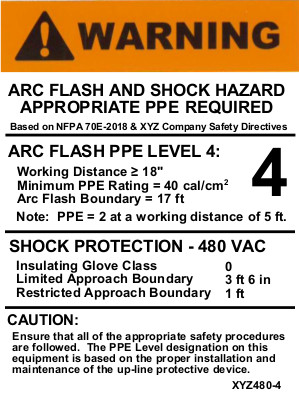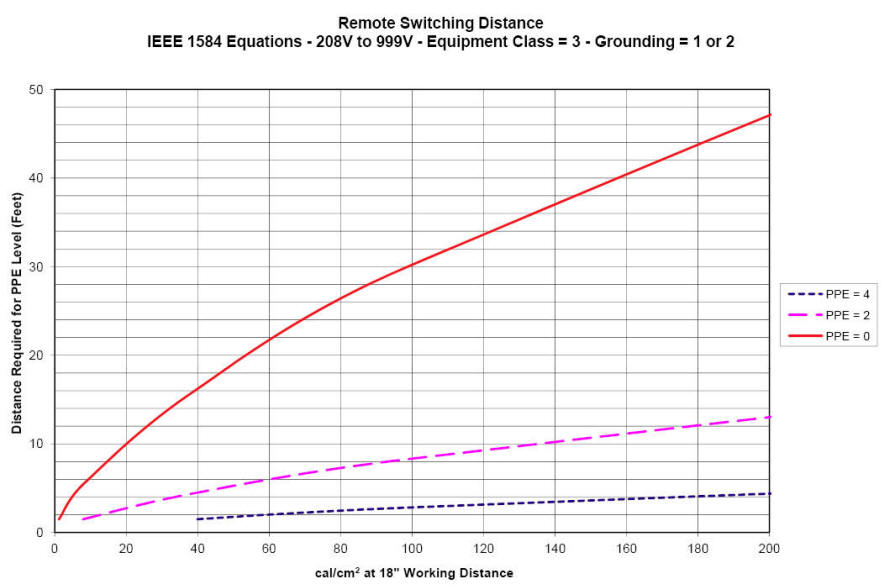Arc Flash Analysis & Solutions
Qual-Tech Engineers can provide the complete arc flash solution for your facility from data collection to analysis to recommended improvements to labels.
Develop a Labeling Strategy for Your Facility
- Begin with the end in mind.*
- It is so important to know where you are going with the arc flash analysis. In the end, the plan is to label the equipment in accordance with NFPA 70E and in a way that is most beneficial to the safety of your employees and to the efficient operation of your facility.
- It has become very common for industrial plants and other facilities to focus on the use of two specific PPE Levels, such as 8 cal/cm2 and 40 cal/cm2, since much of the equipment and clothing is designed for these levels. They are often referred to as PPE Levels 2 and 4, respectively. With this in mind, it is also very beneficial to develop a labeling strategy that is based on two specific PPE Levels.
Click here to learn more about developing an arc flash labeling strategy.
Click here to see an example of a detailed standard arc flash labeling strategy.

Collect Data & Update One-Line Diagrams
- The next major step (and generally the most time consuming step) is the documentation of the system. This includes the impedance data for the utility system, transformers, cables, reactors, generators, motors, etc.
- It is also important to understand the different operating modes of the system, especially with regard to double ended substations and in-house generators.
- Often, one-line diagrams will need to be updated.
Analyze the Arc Flash Hazard
- A short circuit analysis of the system is the first step of the analysis in order to define the fault currents for the system. This includes the maximum or bolted fault current as well as the arcing fault current.
Click here to see details on analyzing a range of arcing currents. - An overcurrent coordination evaluation is the next step. The clearing characteristics of fuses, medium voltage breaker relay schemes, and low voltage breaker trip units are typically the key parameters. It is important to define the existing system and then to evaluate potential changes that would improve the coordination and/or reduce the arc flash hazard.
- The arc flash incident energy, the arc flash boundary, and the required personal protective equipment (PPE) are defined for each location.
Click here to learn more about clearing times and the incident energy for typical operating voltages and working distances for an industrial power system. The following diagram is an illustration of typical PPE levels in an industrial plant using the strategy of PPE = 2 and 4. As this diagram illustrates, the low voltage secondary of transformers rated > 1500 kVA is often a location where the PPE requirement is above the maximum PPE level of 4.
- A short circuit analysis of the system is the first step of the analysis in order to define the fault currents for the system. This includes the maximum or bolted fault current as well as the arcing fault current.

Make Recommendations for Reducing Arc Flash Hazard
- Clearly document the existing overcurrent protection and the recommended changes. This would be done with time-current curves (TCCs).
- The tradeoffs of assuring good overcurrent coordination and minimizing the arc flash hazard are considered in the analysis.
Click here to learn more about the overcurrent coordination criteria.
Click here to learn more about the effect of distance on the arc flash hazard. The following figure illustrates the effect of distance on the arc flash hazard for a specific set of parameters. For example, if the incident energy is calculated at 100 cal/cm2 for a working distance of 18 inches on a 480V system, a PPE = 4 (corresponding to 40 cal/cm2) would be appropriate at a working distance of approximately 3 feet.

Print Arc Flash Labels, Install Labels, and Train Personnel
- If you have a question, please click here to submit it.
- If you would like an experienced engineer to call you to discuss any of the details associated with arc flash analysis, please click here or call 724-873-9275.
- If you have a question, please click here to submit it.
* The 7 Habits of Highly Effective People by Stephen R. Covey
